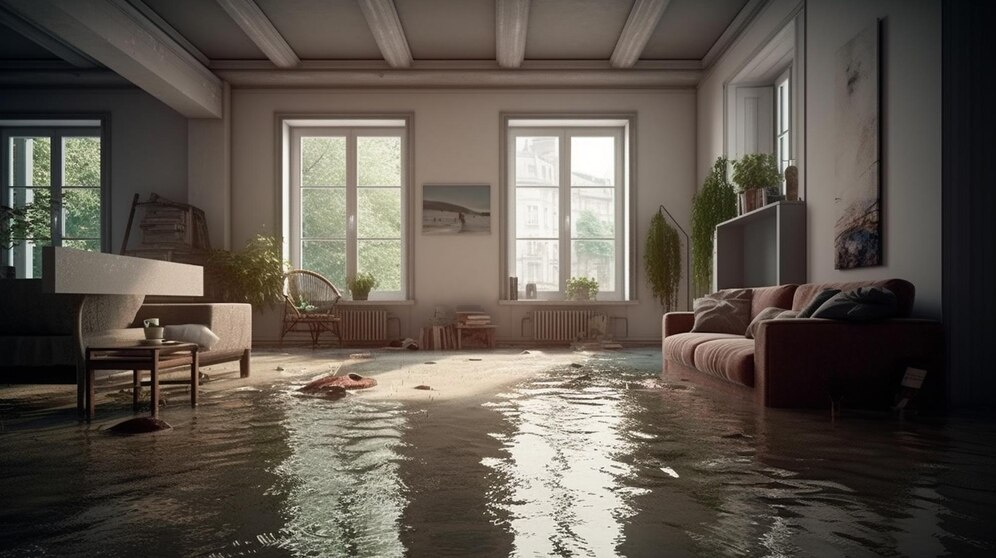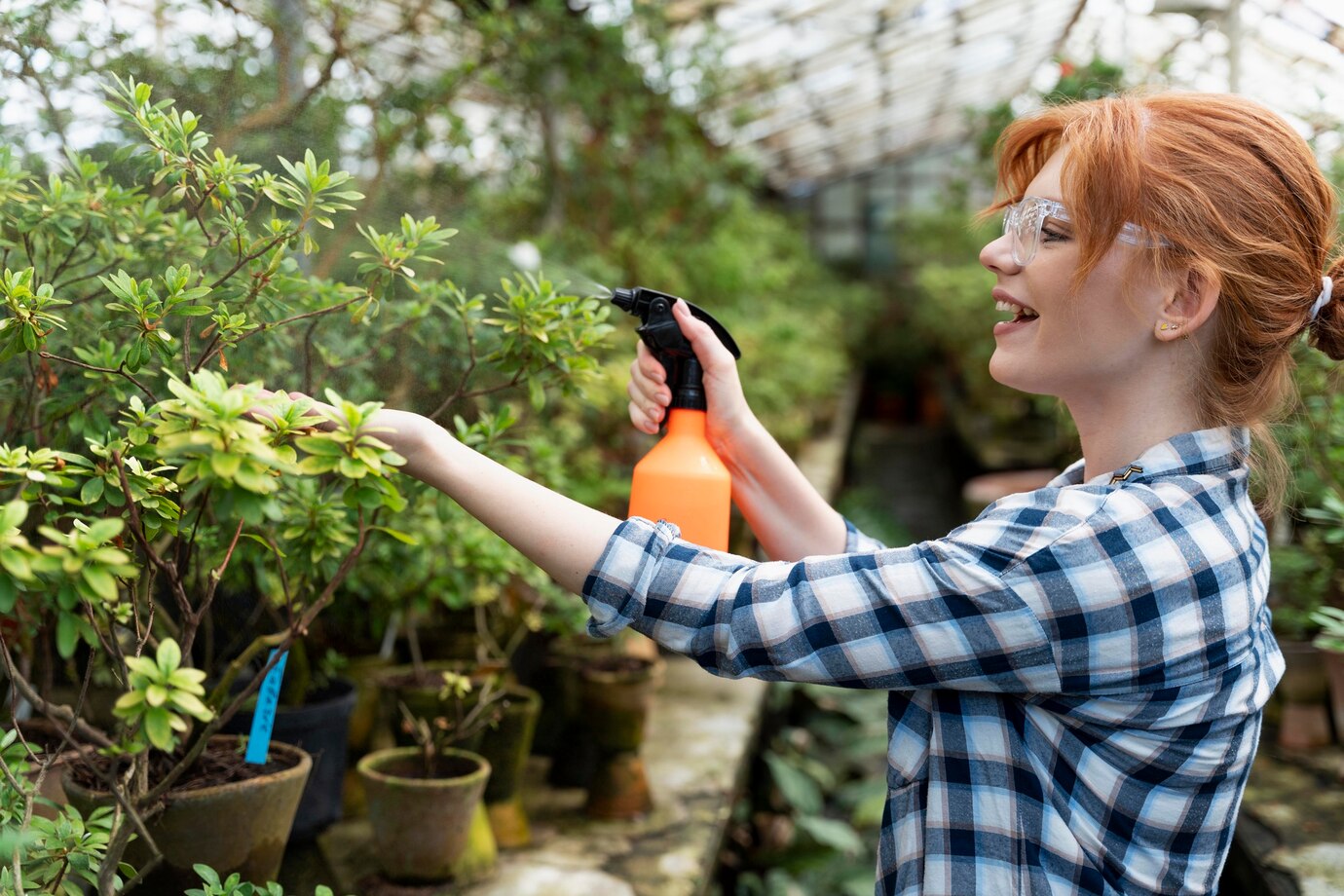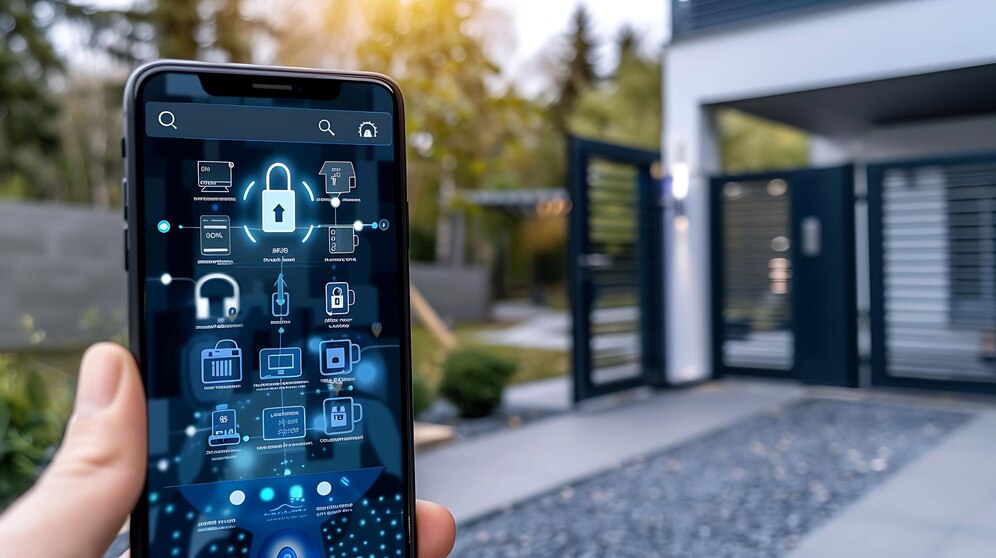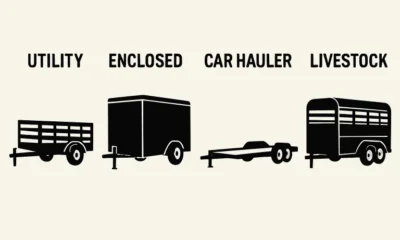Home Improvement
Emergency Home Flooding Recovery: Top Tips for Swift Action

Home flooding can strike unexpectedly, leaving behind a trail of destruction and despair. Whether caused by heavy rains, burst pipes, or sewage backup, the impact of flooding can be devastating. However, there is hope amidst the chaos – swift and informed action can make a world of difference in minimizing water damage and expediting recovery. In this article, we will explore essential tips for emergency home flooding recovery, with a primary focus on water damage restoration. By understanding the causes, prioritizing safety, knowing the right steps to take, and addressing structural damage, you can navigate the challenges of flooding with confidence and resilience.
Understanding the Causes and Types of Home Flooding:
To effectively tackle home flooding, it’s crucial to grasp the causes and types of flooding. Flooding can occur due to various reasons, including heavy rainfall, plumbing issues, or even natural disasters like flash floods. The type and cause of flooding often determine the appropriate response. For instance, basement flooding may require different actions than dealing with a roof leak. Identifying these factors swiftly allows for a more tailored and effective approach to recovery.
Safety First: Prioritizing Your Well-being:
Amid the chaos of a flood, personal safety must be the foremost concern. Evacuate the affected area promptly, especially if there is a risk of structural damage or electrical hazards. Before doing anything else, turn off gas, electricity, and water supplies to prevent further danger. Remember that belongings can be replaced, but your safety is irreplaceable.
Immediate Actions: Minimizing Water Damage:
Acting quickly is paramount to minimize water damage. As soon as flooding occurs, take steps to stop the water source, if possible. Remove valuable items and furniture to a dry location to prevent further damage. If the water level is significant, consider seeking professional water extraction services. Timely removal of excess water is essential to prevent structural damage and mold growth.
Calling in the Experts: The Role of Water Damage Restoration Professionals:
When facing home flooding, seeking professional help is often the wisest decision. Certified water damage restoration professionals possess the expertise and equipment necessary for effective recovery. They begin with a thorough assessment of the damage and create a restoration plan tailored to your specific situation. From specialized drying techniques to mold prevention measures, their knowledge and skills are invaluable in restoring your home to its pre-flood condition.
Drying and Dehumidification: Preventing Mold and Structural Damage:
One of the critical aspects of water damage restoration is thorough drying and dehumidification. Moisture left unchecked can lead to mold growth and structural deterioration. Utilizing dehumidifiers and air movers effectively is vital in this phase. Proper drying not only salvages your property but also ensures a healthier and safer living environment.
Content Salvage and Restoration:
Floods often wreak havoc on personal belongings and sentimental items. However, not all hope is lost. Water damage restoration professionals are skilled in salvaging and restoring damaged items. Using specialized cleaning and restoration techniques, they can often recover cherished possessions that you thought were lost forever. It’s a ray of hope in the midst of adversity.
Assessing Structural Damage:
After the floodwaters recede, it’s crucial to assess the extent of structural damage to your home. This assessment involves examining walls, floors, ceilings, and the foundation for signs of water damage. Look for cracks, warping, or discolouration, as these can indicate structural issues. If you notice any concerning damage, consult with a structural engineer or contractor to evaluate the safety and stability of your home. Addressing structural damage promptly is essential for long-term safety and peace of mind.
Documenting the Damage for Insurance Claims:
Dealing with insurance claims can be a challenging aspect of home flooding recovery. To streamline the process and ensure you receive fair compensation, it’s vital to document the damage thoroughly. Take clear photographs and videos of the affected areas and damaged belongings. Keep a detailed inventory of items that require replacement or repair. Maintain records of all communication with your insurance company, including claim numbers and agent names. Being organized and diligent in documenting the damage will help you navigate the insurance process more effectively.
Coping with Emotional Stress:
Home flooding is not only a physical ordeal but also an emotional one. The experience can be traumatic and overwhelming, leaving you feeling stressed and anxious. It’s essential to acknowledge and address the emotional toll that flooding takes on you and your family. Seek support from friends, family, or mental health professionals if needed. Creating a support network can help you cope with the emotional challenges that often accompany the recovery process. Remember that it’s okay to ask for help and take breaks when necessary. Your emotional well-being is as crucial as the physical aspects of recovery, and addressing it can lead to a smoother and more resilient recovery journey.
Community Assistance and Resources:
In times of home flooding, you’re not alone. Communities often come together to support those affected by disasters. Local government agencies, non-profit organizations, and volunteers may offer assistance and resources to help you recover. These resources can include emergency shelters, food assistance, and access to temporary housing. Reach out to local authorities and disaster relief organizations to inquire about available assistance in your area. Community support can provide valuable aid during your home flooding recovery, reinforcing the importance of unity and solidarity in times of adversity.
Preventing Future Flooding: Long-term Measures:
While dealing with the aftermath of a flood is essential, preventing future flooding is equally crucial. Implement long-term measures like sump pumps, flood barriers, and improved drainage systems. Regular maintenance and inspections of your home’s infrastructure can identify potential vulnerabilities before they lead to flooding. Additionally, consider appropriate insurance coverage to safeguard your property in case of future flood-related damages.
Conclusion:
Home flooding can be a harrowing experience, but it’s essential to remember that recovery is possible with swift and informed action. By understanding the causes and types of flooding, prioritizing safety, taking immediate actions to minimize water damage, seeking professional help, addressing structural damage, documenting the damage for insurance claims, and implementing long-term preventive measures, you can navigate the challenges of home flooding with resilience. Thorough drying, content salvage, and proactive prevention contribute to a successful recovery. While floods may test your resolve, the right knowledge and actions can help you restore your home and your peace of mind.
Pat Baker has lived through natural disasters, enjoys home restoration projects, and writes for water remediation companies in the Philadelphia area.
Home Improvement
Sustainable Solutions for Garden Irrigation: How to Keep Your Garden Thriving

Key Takeaways:
- Understand sustainable irrigation practices to conserve water and enhance garden health.
- Learn about modern irrigation technologies that benefit both the environment and your garden.
- Discover easy-to-implement strategies for maintaining efficient water usage.
Introduction to Sustainable Garden Irrigation
The term “sustainability” has gained significant traction recently, becoming a cornerstone of modern gardening practices. As gardeners and enthusiasts become more conscious of their environmental footprint, there’s a marked shift towards methods that conserve resources while promoting plant health. At the heart of this sustainable push is irrigation—a fundamental gardening aspect affecting plant growth and vitality. Even the most carefully tended gardens can suffer from inconsistent growth or plant loss without efficient irrigation.
Whether you’re experiencing plant health issues or simply seeking to modernize your current systems, exploring irrigation repair solutions might be your first step toward achieving a thriving garden. Sustainable irrigation practices go beyond merely conserving water. It’s about ensuring that every drop contributes effectively to your garden’s vitality, allowing plants to flourish while reducing waste. By integrating sustainable irrigation, you can enhance your garden’s beauty and establish an eco-friendly and economically viable system that respects our planet’s resources.
Types of Sustainable Irrigation Solutions
A spectrum of sustainable irrigation solutions is available, each catering to different needs and garden configurations. Among the most efficient is drip irrigation. This method delivers water directly to plant roots, significantly reducing wastage. Since the water is not sprayed over a wide area, evaporation and runoff are minimized. This method ensures that plants get the necessary hydration without water stress. Proper irrigation installation is key to maximizing these benefits, ensuring an efficient system that conserves water while promoting healthy plant growth.
Soaker hoses provide a viable alternative in areas where drip irrigation isn’t suitable. These hoses allow water to seep out slowly along the length of the hose, making them ideal for uniformly watering entire rows of plants or extensive garden beds. When implemented properly, soaker hoses can significantly reduce water use while maintaining consistent moisture levels. Additionally, rainwater harvesting systems can be a game-changer for sustainable irrigation. By collecting rainwater, these systems provide a natural, cost-effective water source, decreasing reliance on municipal water supplies and further integrating sustainable practices into everyday gardening.
Benefits of Sustainable Irrigation Practices
Adopting sustainable irrigation practices brings many benefits that extend beyond the garden. Environmentally, they represent a proactive step towards conserving water—a finite resource threatened by climate change and increasing global demand. These systems curtail water wastage and reduce runoff, diminishing the ecological impact on local water tables and aquatic ecosystems.
Eco-conscious gardening doesn’t stop at environmental benefits. Implementing efficient irrigation methods can lead to substantial economic savings. Reduced water bills are a direct financial benefit of these practices. Furthermore, decreasing the frequency of irrigation system repairs, thanks to improved methods, results in lower maintenance costs. The financial savings and the positive environmental impact create a compelling case for transitioning to sustainable irrigation practices.
Innovations in Garden Irrigation Technology
The evolution of technology has brought about significant advancements in garden irrigation systems. Smart irrigation controllers are exemplary tools born out of innovative technological breakthroughs. These devices can be programmed to automatically adjust watering schedules based on real-time weather data and soil moisture levels. This ensures gardens are watered optimally, reducing over-irrigation during rainy periods and providing adequate moisture during dry spells.
Moreover, moisture sensors have become invaluable assets. By embedding these sensors into the soil, gardeners receive real-time data about moisture levels, allowing for precise water application. This level of precision protects plant health and optimizes water usage, making high-tech irrigation setups a reliable choice for those looking to pair efficiency with sustainability.
Practical Tips for Implementing Sustainable Irrigation at Home
Implementing sustainable irrigation at home doesn’t have to be daunting or expensive. One of the simplest systems to start with is drip irrigation. To set this up, you’ll need a main water hose, drip tubing, connectors, and emitters. Assemble the system by running the main hose from your water source and attaching the drip tubing alongside your plant rows. Connect the emitters to the tubing near each plant’s base to ensure even water distribution.
When choosing equipment, consider your garden’s type and size. While a smaller urban garden may benefit from inexpensive manual systems, larger gardens might require more advanced solutions. Start small; sometimes, incremental steps lead to the most meaningful change toward creating a sustainably watered garden.
Debunking Common Myths About Watering Gardens
Many myths persist about the right way to water gardens. A common misconception is that evening watering is ideal. However, watering in the early morning is advantageous as it’s cooler, minimizes evaporation, and reduces the risk of fungal diseases that can thrive in damp conditions. Over-irrigation is another widespread issue, often stemming from the notion that more water equals healthier plants.
In reality, most gardens only require one or two thorough weekly waterings, adjusting for climate and soil conditions. Science-backed research and studies help dispel these myths, providing evidence-based insights.
Conclusion: Making the Transition to Sustainable Irrigation
Transitioning to sustainable irrigation practices offers a pathway to a healthier garden and a more sustainable lifestyle. By adopting modern technologies alongside tried-and-tested traditional methods, gardeners can ensure maximum efficiency while maintaining ecological integrity. Remember, effective change often starts with small, mindful steps.
Implement one sustainable practice at a time, and gradually, you’ll witness your garden blossom into a vibrant, eco-friendly sanctuary. As more gardeners embrace these methods, the cumulative effect can significantly positively impact our environment.
Home Improvement
The Benefits of Installing Security Screens in Urban Homes

In today’s bustling cities, securing your home goes beyond traditional locks and keys. Among the modern innovations, security screens are becoming increasingly popular in urban households. These versatile additions not only enhance the security of your residence but also offer a host of other benefits that might not be immediately obvious. As more homeowners explore their options, understanding the full range of advantages these screens provide can help them make informed decisions.
The multifunctionality of security screens is particularly appealing to those living in dense urban environments. Dense areas often require a heightened focus on protection and thoughtful energy management. By providing a seamless mixture of aesthetics and efficiency, security screens can significantly improve the living experience in urban homes. Let’s delve deeper into how these installations can transform modern urban living spaces and why they are becoming an essential consideration for homeowners.
Introduction to Security Screens
Security screens have evolved significantly over the years, becoming more than just barriers against unwanted entry. Integrating advanced technology and superior materials, these screens are crafted to withstand significant impact while still offering visibility and airflow. This dual-purpose function makes them an enticing option for modern homeowners who seek a balance of aesthetics and functionality.
Enhancing Home Security
Strengthening home security is paramount, especially in urban areas where break-in statistics can be alarming. Security screens provide a physical deterrent to intruders, thereby reducing potential risks. According to reports from Security Magazine, many burglaries occur through windows and doors, spaces that security screens effectively secure. This extra layer of protection can give homeowners peace of mind, knowing their homes and families are safeguarded from potential threats.
Improving Energy Efficiency
A significant but often overlooked benefit of security screens is their ability to enhance energy efficiency. By acting as an insulating layer, security screens help maintain indoor temperatures, reducing the reliance on heating and cooling systems. This not only leads to a more sustainable way of living but also translates to cost savings on utility bills. According to research found on Energy.gov, even small improvements in home insulation can lead to substantial reductions in energy bills, making security screens an eco-friendly and economically smart option for urban dwellers.
Increasing Home Ventilation
Urban living often requires an intelligent balance between safety and comfort. Security screens allow homeowners to keep windows open for ventilation without compromising on security. This feature ensures that fresh air circulates throughout the home, which is integral for maintaining a healthy indoor environment, particularly in cities where pollution can pose a problem. By promoting natural ventilation, security screens contribute to better air quality and a more pleasant living atmosphere.
Reducing Glare and UV Exposure
Managing light exposure is a crucial aspect of maintaining the comfort and longevity of household interiors. Security screens help reduce glare and block a significant portion of harmful UV rays. This not only safeguards your furnishings from fading over time but also ensures a more comfortable environment by diffusing harsh sunlight. For urban homes often drenched in natural light, this feature helps balance brightness while preserving interior beauty.
Enhancing Aesthetic Appeal
Aesthetic value is an essential consideration for many homeowners. Security screens come in an array of styles and finishes, enabling them to integrate with existing architectural designs or even enhance them seamlessly. This flexibility ensures that homeowners do not have to compromise on the appearance of their homes for safety. Whether your home embodies classical elegance or contemporary minimalism, there’s a security screen to match, making it a delightful addition to any home setup.
Cost-Effectiveness of Security Screens
While the initial investment in security screens might seem high, the long-term savings they offer make them a cost-effective choice. By helping to reduce energy bills and protect against potential break-ins, these screens provide financial benefits that accumulate over time. Making a smart investment in safety and efficiency now can lead to significant savings and provide assurance against future expenses related to break-ins or inefficient energy use.
Conclusion: Making the Right Choice for Your Home
Security screens offer a multitude of benefits that extend beyond mere protection. By combining functionality with aesthetic value, they address the diverse needs of modern urban homeowners. From saving on energy costs to enhancing Urban Homes design, security screens are a wise investment. As you consider ways to enhance your home, evaluating these benefits comprehensively will ensure that you choose the right solutions to meet your security, efficiency, and aesthetic needs, making your home a safer, more comfortable space.
Home Improvement
Easy Steps to Take Before Calling a Plumber

Before calling a plumber, check for visible leaks around faucets and pipes and attempt basic troubleshooting, like tightening connections or clearing minor clogs with a plunger. Turn off the water supply to prevent further damage and note any unusual sounds or odours from drains. These steps can help resolve minor issues and provide helpful information for the plumber if professional help is needed.
Understanding the Basics
When faced with a plumbing issue, it’s easy to feel overwhelmed and immediately think of calling a plumber. However, having a fundamental understanding of your home’s plumbing system can be incredibly empowering. Think of it like knowing your car’s essential components–you’re better equipped to handle minor issues and communicate more effectively with professionals. In most homes, the system combines several elements: water supply, fixtures, appliances like water heaters, and drainage systems. Each component is pivotal in ensuring water flows in and out efficiently. By familiarizing yourself with these aspects, minor problems can be identified early, and potential issues can be prevented before they escalate.
Check for Leaks and Drips
While minor leaks and drips may seem insignificant initially, they can significantly increase your water bill and damage your plumbing system if ignored. Before contacting an emergency plumber, scrutinize all visible faucets and pipework to identify any issues needing prompt attention. Begin by checking under sinks, behind appliances, and where joints or valves might occur. A gentle wrench turn can secure a connection and solve the problem. In other cases, identifying a worn-out washer or seal could lead to a simple replacement fix. Consistently monitoring these areas can prevent the development of mould and structural issues, which come with more severe consequences and expenses.
Unclog Drains Naturally
Clogged drains are among the most frequent problems homeowners encounter, yet they often can be addressed without outside help. A clogged drain can arise from various causes, such as an accumulation of hair, soap scum, and other debris. Start with a tried-and-true plunger or a household mixture like baking soda followed by vinegar. This combination not only breaks down the blockage but also neutralizes odors. Remember, avoid using chemical drain cleaners, which, though effective in the short term, can corrode pipes over time and lead to more severe issues. By keeping pests and odors at bay and maintaining a regular cleaning schedule using natural agents, you can protect the integrity of your plumbing system.
Adjust Water Pressure
More than simply a tiny annoyance, a sudden loss in water pressure may be a sign of a plumbing system issue. Check if all fixtures are affected or just one. If the entire house appears to experience low pressure, start by verifying that the main water shut-off valve is fully open; sometimes, it might be slightly closed, impacting the flow. Additionally, mineral deposits can block aerators — small attachments at the end of faucet spouts. Removing, cleaning, and replacing them every few months can dramatically improve pressure and extend the life of your fixtures.
Inspect Water Heater
Your water heater is essential for comfort and daily routines. If it stops providing hot water, several checks might restore its function. Ensure the thermostat is adjusted to the desired temperature, usually between 120 and 140 degrees Fahrenheit. Inspect the pilot light on gas heaters; if it’s out, relighting it might solve the problem. For electric models, ensure the circuit breaker hasn’t tripped. Sometimes, a simple reset can bring things back to normal. Drain the tank annually to clear out sediment build-up, ensuring efficiency and extending lifespan.
Research DIY Repairs
Many minor household plumbing issues are within the reach of handy homeowners, thanks to the wealth of information available online. Resources like This Old House are invaluable, offering step-by-step guides on common problems like a frequently running toilet or a slow-draining sink. Attempting these repairs can be both rewarding and economical. However, constantly evaluate the expertise required and your comfort level to avoid unintentional damage. After successfully fixing a minor plumbing issue, the sense of accomplishment can enhance your confidence in handling future home maintenance tasks.
Know When to Call a Pro
While tackling minor issues can be cost-effective and rewarding, knowing when to call a professional is critical to prevent exacerbating a problem. Certain situations, such as persistent sewer odors, drastic drops in water pressure, or visible water damage, indicate severe issues that require expert diagnosis and repair. Burst pipes or flooding due to defects in underground plumbing are emergencies that need immediate professional attention. Acting swiftly not only upholds the safety of your home but also can prevent a minor mishap from snowballing into a significant, costly repair.
Be Prepared for the Call
If you’ve decided that professional assistance is necessary, being prepared can lead to a smoother resolution. Clearly articulate the issue to give the plumber a head start on diagnosing the problem. Knowing details like the age of pipes or the brand and model of problematic appliances can make a difference. Reliable sources like Angie’s List advise selecting the right professional, focusing on credentials, experience, and reviews from previous clients. Such preparation ensures efficient service, saving time and money while restoring the plumbing to optimal function.
-

 Garden3 weeks ago
Garden3 weeks agoGuide to Choosing the Right Trailer for Your Needs
-

 Travel3 weeks ago
Travel3 weeks agoSouvenir Spotlight: Iconic Keepsakes That Capture the Spirit of Popular Destinations
-

 General2 weeks ago
General2 weeks agoStreamlined & Up-to-Date: Navigating the Simple Steps and Current Requirements to Become a Notary Public
-

 Business2 hours ago
Business2 hours agoHallmarks of a Reputable PLC Programming Company for Controls and Training
